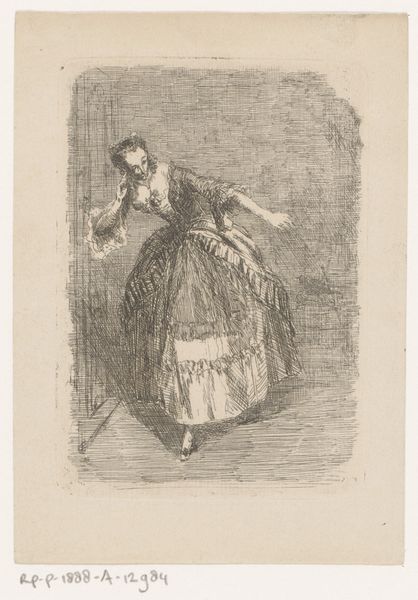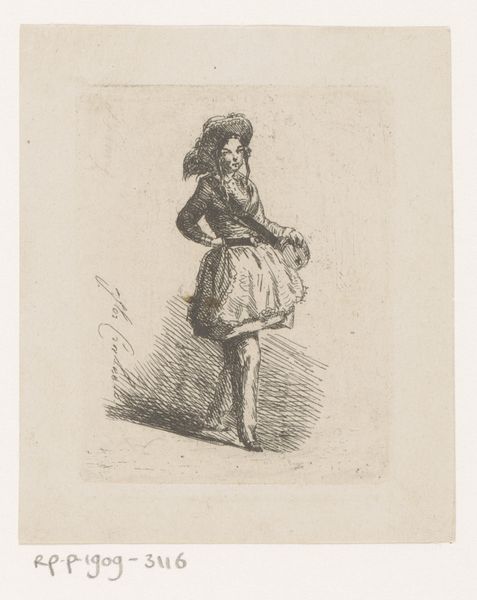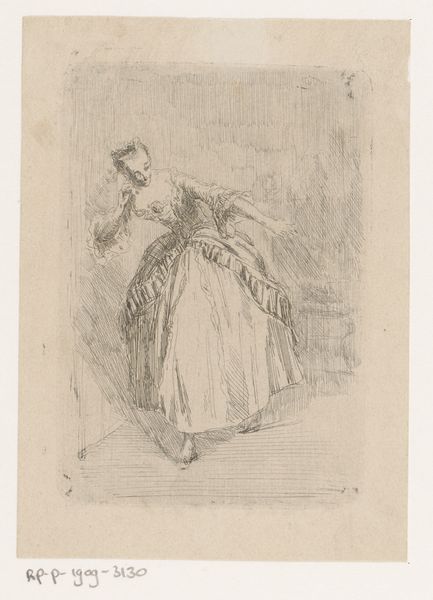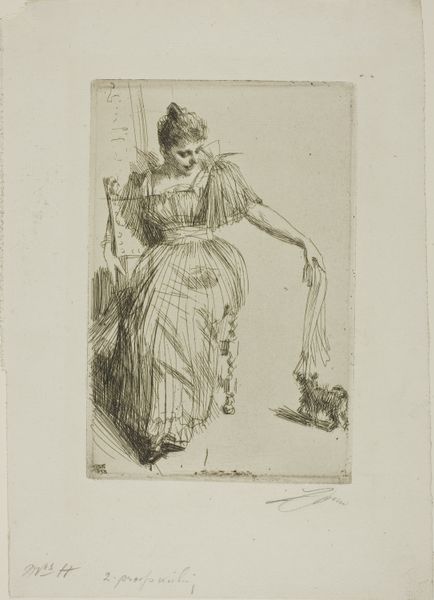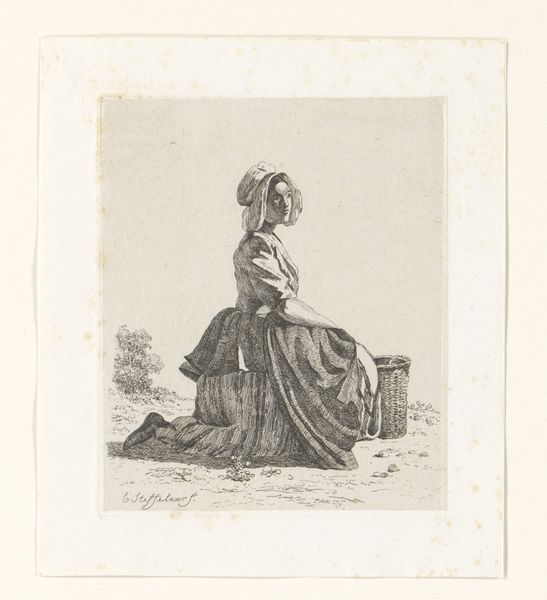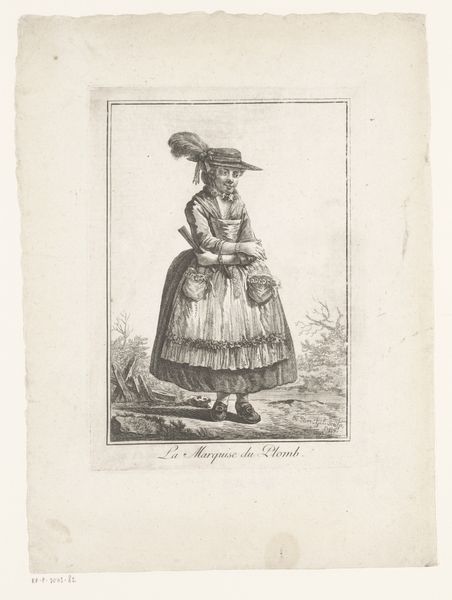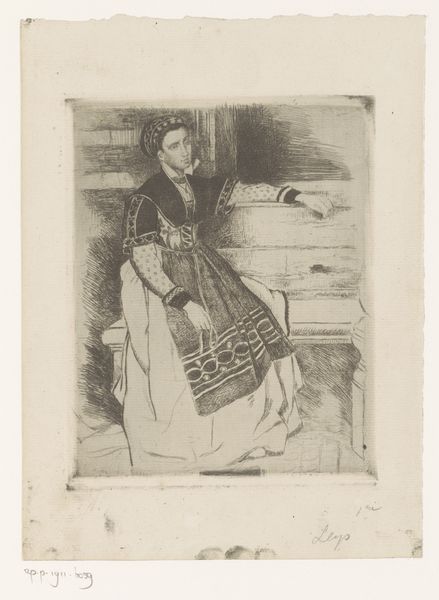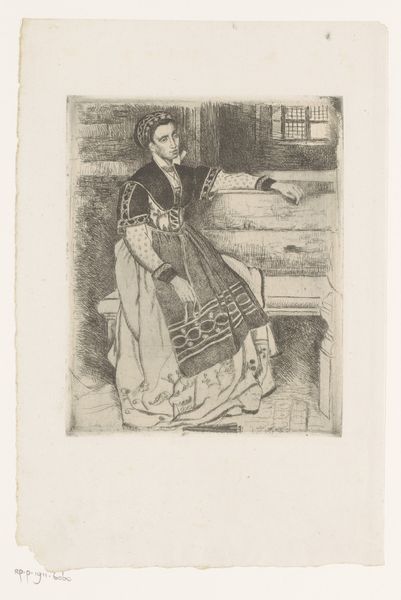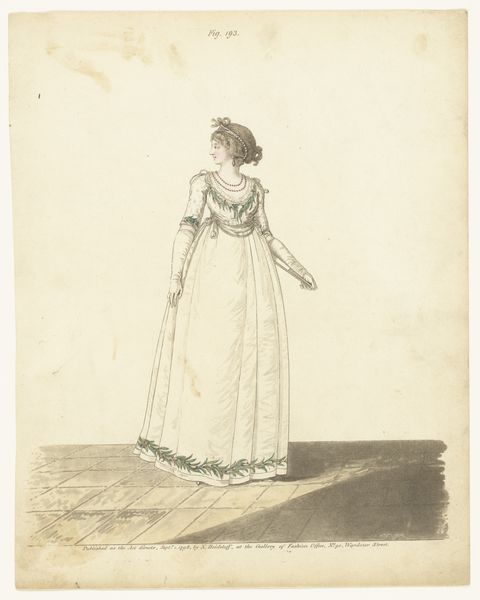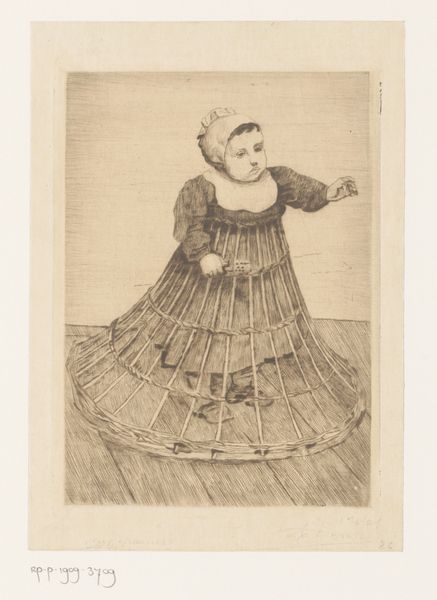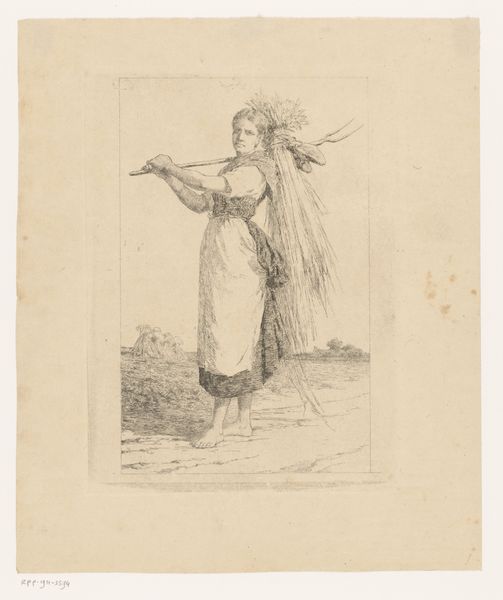
Dimensions: height 106 mm, width 74 mm
Copyright: Rijks Museum: Open Domain
Florent Nicolas Crabeels created this print, “Luisterende jonge vrouw,” using etching. A metal plate, likely copper, would have been coated with a waxy ground, and then the artist scratched an image into the ground with a needle, exposing the metal beneath. The plate was then immersed in acid, which bit into the exposed lines, creating grooves. This process allowed Crabeels to achieve fine, detailed lines and subtle tonal variations. After removing the ground, ink was applied to the plate, filling the etched lines, and then the surface was wiped clean. Finally, the plate was pressed onto paper, transferring the ink and creating the print we see. The quality of the line—its fineness and capacity for variation—defines the aesthetic effect. This print, a multiple, democratized the image. Rather than a one-off painting, this image could circulate, bringing art to a broader audience. The labor-intensive process reflects the intersection of craft, design, and materiality, essential to understanding the full meaning of the artwork.
Comments
No comments
Be the first to comment and join the conversation on the ultimate creative platform.

